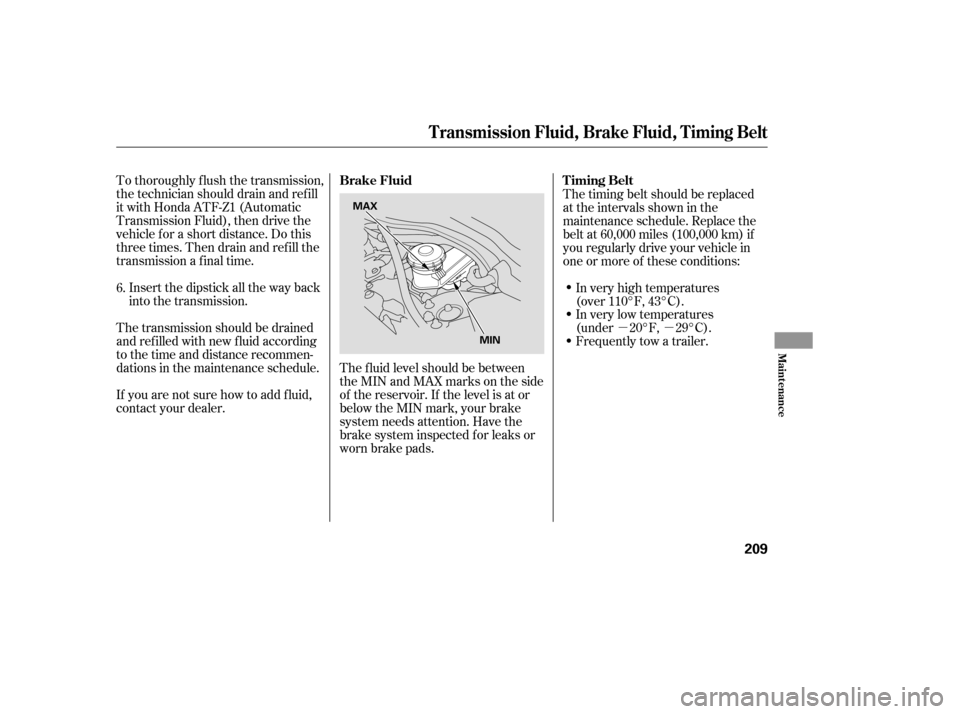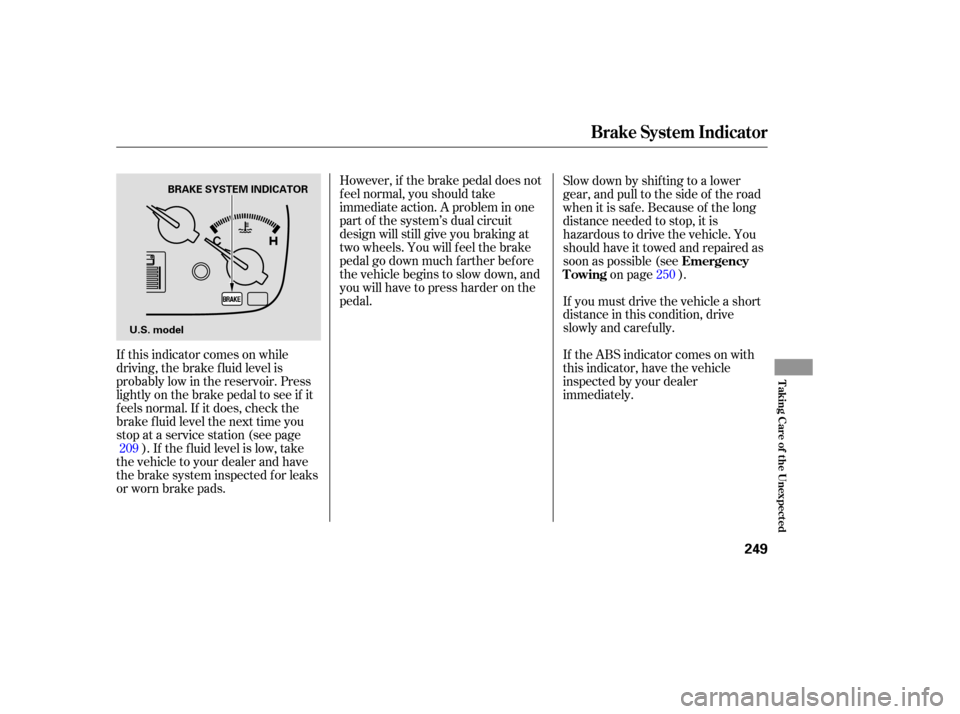Page 177 of 286

Check the brakes after driving
through deep water. Apply the
brakes moderately to see if they f eel
normal. If not, apply them gently and
f requently until they do. Be extra
cautious in your driving.The hydraulic system that operates
the brakes has two separate circuits.
Each circuit works diagonally across
the vehicle (the lef t-f ront brake is
connected with the right-rear brake,
etc.). If one circuit should develop a
problem, you will still have braking
at two wheels.
Your vehicle is equipped with disc
brakes. A power assist helps reduce
the ef f ort needed on the brake pedal.
The ABS helps you retain steering
control when braking very hard.
Put your f oot on the brake pedal only
when you intend to brake. Resting
your f oot on the pedal keeps the
brakes applied lightly, builds up heat,
increases wear and reduces their
ef f ectiveness. It also keeps your
brake lights on all the time,
conf using drivers behind you.
Constant application of the brakes
when going down a long hill builds
up heat and reduces their ef f ective-
ness. Use the engine to assist the
brakes by taking your f oot of f the
accelerator and downshif ting to a
lower gear. If the brake pads need replacing, you
will hear a distinctive, metallic
screeching sound when you apply
the brake pedal. If you do not have
the brake pads replaced, they will
screech all the time. It is normal f or
the brakes to occasionally squeal or
squeak when you apply them.
Braking System
Brake Wear Indicators Braking System Design
176
�����—�
���—���
�y��������
������y���
�(���'�������y���
�����y
Page 210 of 286

�µ�µ
To thoroughly f lush the transmission,
the technician should drain and ref ill
it with Honda ATF-Z1 (Automatic
Transmission Fluid), then drive the
vehicle f or a short distance. Do this
three times. Then drain and ref ill the
transmission a f inal time.
Insert the dipstick all the way back
into the transmission.
The transmission should be drained
and ref illed with new f luid according
to the time and distance recommen-
dations in the maintenance schedule.
If you are not sure how to add f luid,
contact your dealer. The f luid level should be between
theMINandMAXmarksontheside
of the reservoir. If the level is at or
below the MIN mark, your brake
system needs attention. Have the
brake system inspected f or leaks or
worn brake pads.The timing belt should be replaced
at the intervals shown in the
maintenance schedule. Replace the
belt at 60,000 miles (100,000 km) if
you regularly drive your vehicle in
one or more of these conditions:
In very high temperatures
(over 110°F, 43°C).
In very low temperatures
(under 20°F, 29°C).
Frequently tow a trailer.
6.
T ransmission Fluid, Brake Fluid, T iming Belt
Timing Belt
Brake Fluid
Maint enance
209
MAX
MIN
�����—�
���—���
�y���������������y���
�(���'�������y�����
���y
Page 250 of 286

However, if the brake pedal does not
f eel normal, you should take
immediate action. A problem in one
part of the system’s dual circuit
design will still give you braking at
two wheels. You will f eel the brake
pedal go down much f arther bef ore
the vehicle begins to slow down, and
you will have to press harder on the
pedal.If the ABS indicator comes on with
this indicator, have the vehicle
inspected by your dealer
immediately.
If this indicator comes on while
driving, the brake f luid level is
probably low in the reservoir. Press
lightly on the brake pedal to see if it
f eels normal. If it does, check the
brake f luid level the next time you
stop at a service station (see page
). If the f luid level is low, take
the vehicle to your dealer and have
the brake system inspected f or leaks
or worn brake pads. If you must drive the vehicle a short
distance in this condition, drive
slowly and caref ully. Slow down by shif ting to a lower
gear, and pull to the side of the road
when it is saf e. Because of the long
distance needed to stop, it is
hazardous to drive the vehicle. You
should have it towed and repaired as
soon as possible (see
on page ).
209 250
Emergency
Towing
Brake System Indicator
T aking Care of t he Unexpect ed
249
BRAKE SYSTEM INDICATOR
U.S. model
�����—�
���—���
�y���������������y���
�(���'�������y���������y